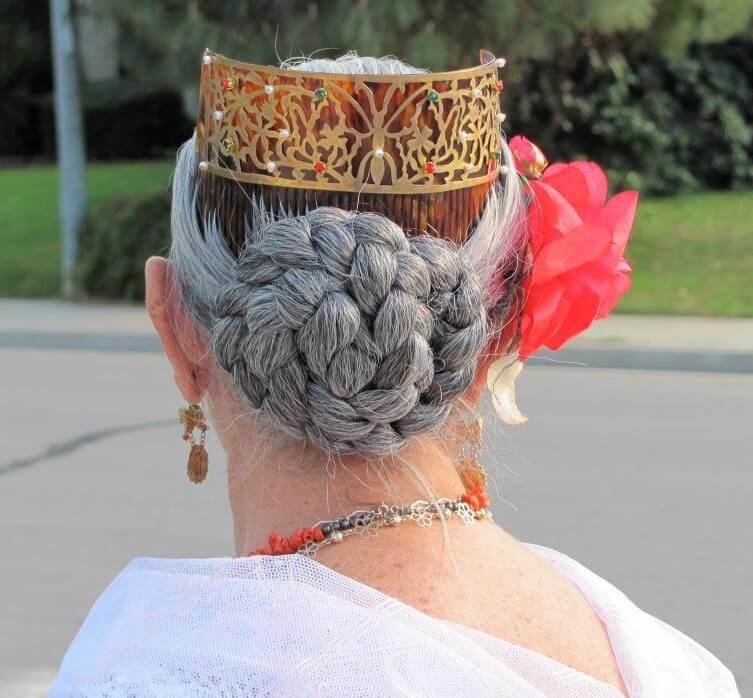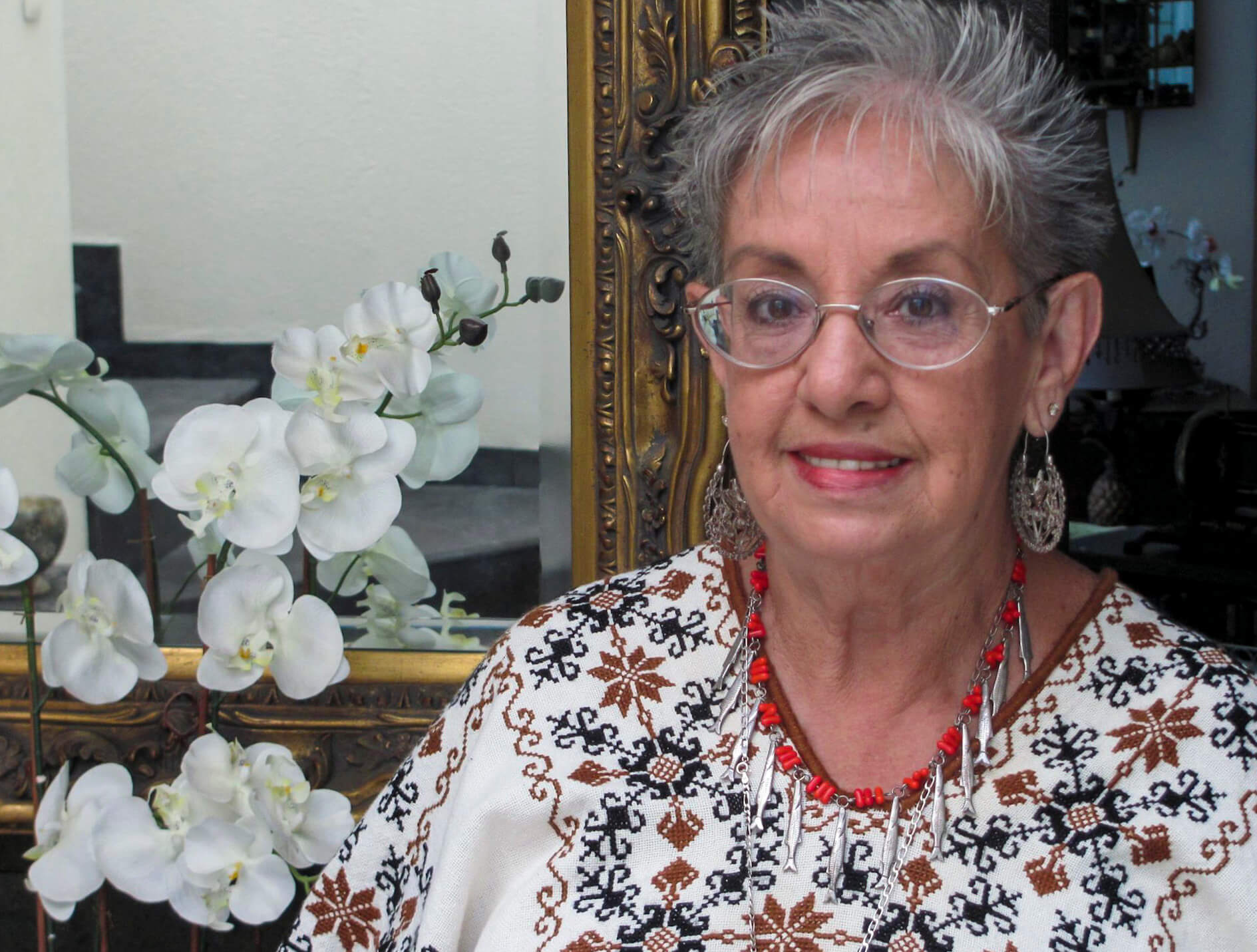
Maestra Spotlight – Dr. Maria Guadalupe Castro Paramo
 Born and raised in Morelia, Michoacan, Mexico, Maestra Guadalupe Castro Paramo began dancing classic ballet at the age nine. At the age of 15, she began dancing Folklorico under the direction of Juan Antonio González Soria.
Born and raised in Morelia, Michoacan, Mexico, Maestra Guadalupe Castro Paramo began dancing classic ballet at the age nine. At the age of 15, she began dancing Folklorico under the direction of Juan Antonio González Soria.
Deeply invested in the practice of Folklórico, Maestra Guadalupe also attended the Instituto Michoacano de Arte Popular, also under Maestro Juan Antonio’s direction where she continued her studies and practice. She graduated from Academia de la Danza Mexicana in 1977, as Director, and subsequently attended the School of Dance of the Ballet Folklórico de México between 1978 and 1981.
Her passion, dedication and discipline in the field, later led her to pursue a career in Anthropology. She received her PhD in Anthropology from the University of California, Los Angeles.
In 2012, she retired and moved to her hometown in Morelia, Michoacán, where she now teaches two adult groups. Her undying intrigue in learning more also led her to enhance her knowledge in Fandango. She has attended advanced workshops in the type of dance, learning under the direction of Gerardo Reyes, in Veracruz, Veracruz, Anahi Socco, in Xalapa, Veracruz, Leobardo Luna Ramìrez in Tlacotalpan, Veracruz, and Ernesto Luna Ramírez in Tlacotalpan, Ver., and in Morelia, Mich.
Maestra Castro Paramo joined the DUF familia in the late 90’s and has been teaching ever since. In her immense and invaluable contribution, she wrote three volumes of short monographs specifically directed to teachers of Mexican Folk Dance in the US.
Her books, “La Danza y el Traje en Mexico” Volumes I, II and III, published in English, are bound in one volume and available in the DUF Tienda by pre-order, only. A well respected member in the Folklorico community, and a treasure for Danzantes Unidos, Maestra Guadalupe Castro Paramo was the inspiration and first-ever recipient of the Danzantes Unidos Lifetime Achievement Award.
Upon first glance . . .
“When I asked Maestra for a headshot for this article–she sent me this. My first impression was, “Wow, how absolutely gorgeous!” I was also reminded of the attention to detail in everything that she is about and her quest for perfection in seeking the traditional regional expression. My next thought was how beautiful our culture is, from whatever angle you are looking at it–including the back of our heads. I continued to obsess over the beauty of this photo and what it also represented. This Maestra has long since retired as an educator at the collegiate level, here in the US. She left us with an incredible body of research IN PRINT, IN ENGLISH, through the DUF Syllabus “La Danza y el Traje en Mexico”. (In it, she details several regions per volume of her research.)
Then she went off to ‘retire’ back to her roots and hometown in Morelia, Michoacan; presumably to rest and perhaps get back to her writing for another set of volumes that we would devour (dropping hopeful hints here). Not so. Instead, this woman dove headfirst into the regional arts of her state of Michoacan, studying and mastering new skills in the folk arts including plumeria (the art of ‘painting’ with precious bird feathers); and more fantastically, continuing her research in the field and then starting again, her own group of ‘mature’ dancers to represent Mexico and it’s folklore.
Even in her retirement, Maestra Dr. Maria Guadalupe Castro Paramo leads us by example. So of course, what we see IS THE BACK OF HER HEAD. She is an absolute jewel, and Danzantes Unidos is extremely proud that she gives us the time of day. I’m inspired to make the following request: We invite our young leaders (and future leaders), women in folklorico, to please show us the back of your folklorico head. Share your headshot and post #BackOfMyFolkloricoHead #BOMFH #ChecaMisTrensas. Mujeres, take your inspiration to LEAD and take us to new levels in and beyond Folklorico. And yes, Men, we know that you also lead and will include you in this social experiment. We don’t need to see your face, just the back of your head #ChecaMiSombrero #HombresDirectoresDelFolklore. Thank you for your time.” — Maria Luisa Colmenarez, Executive Director, Danzantes Unidos.
At DUF 2017
Veracruz Sotavento (advanced level)
Taller de sones jarochos del Puerto Nivel avanzado, programa propuesto:
1. Maria Chuchena
2. Iguana
3. La Tuza
4. La Bruja
Los sones jarochos son la modalidad mejor conocida de la música de Veracruz, y la que se ha diseminado en escenarios de todo tipo por mucho tiempo, sin embargo no es la única. En el norte del estado se da el huapango. Panuco, Veracruz, es precisamente la cuna de este genero musical/dancístico. En el puerto de Veracruz se da el jarocho, y en el sur—Tlacotalpan, Alvarado, Tierra Blanca, Cosamaloapa, etc. Se da el fandango, o baile de tarima. Esta modalidad por fin esta cobrando popularidad, y se esta conociendo tanto en Mexico como en el extranjero, especialmente los EU. Hay además danzas tradicionales ancestrales, las mas antiguas de las cuales son la Danza de Voladores, y la Danza de Huahuas. De la época colonial data la Danza de Negritos, Danza de Santiagueros, and Danza de Moros y Cristianos. Considerando los limites de tiempo, este taller, se afocara específicamente a los sones del Puerto.
Sones jarochos is the music and dance genre from Veracruz best known elsewhere, which has been popularized everywhere for the longest time, however, it is not the only kind of music in Veracruz. In the northern portion of the state, the huapango is the preferred type. In fact, Panuco is the birthplace of this kind of music and dance. The sones jarochos characterize the port of Veracruz, and in the south—Tlacotalpan, Alvarado, Tierra Blanca, Cosamaloapa, etc., the fandango, or tarima dances is the favored type of music and dance. There are also ancient dances, such as Danza de Voladores and Danza de Huahuas, which are the oldest, and from Colonial times there is the Danza de Negritos, Danza de Santiagueros, and Danza de Moros y Cristianos. However, considering the time constraints of this workshop, the focus will be on the sones jarochos from the Puerto de Veracruz.
DUF 2017 “Alma Indigena” will take place on April 7, 8 & 9 in Fresno, CA.
$ave on registration fees by enrolling early!
Early Registration now through 12/20/16
Regular Registration 12/21/16 through 2/8/17
Late Registration 2/9/17 through 3/30/17
or
Tags:
ballet folklorico, Danzantes Unidos Festival, Danzantes Unidos Festival 2017, DUF 2017, DUF Maestros, folklorico blog, mexican folk dance, Folklorico Lifetime Achievement Award Honoree
Sorry, the comment form is closed at this time.